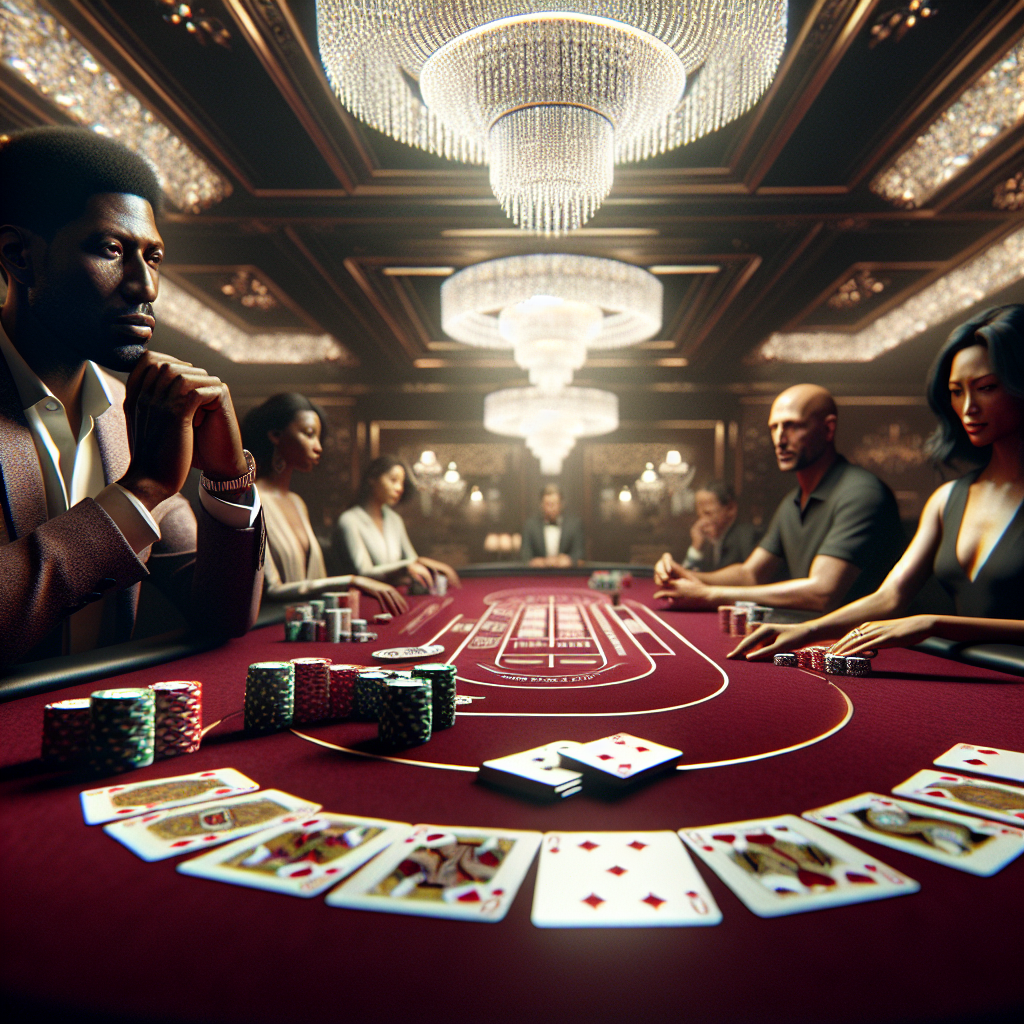What is color play? Understanding the Basics and My First Encounter
I’ll never forget the crossroads I found myself at a few years ago. I’d grown disillusioned with my usual online gaming routines; the thrill just wasn’t there anymore. Everything felt predictable, and I caught myself longing for something more dynamic—something that could reawaken my sense of excitement and creativity. It was during this period of stagnation that I stumbled upon the concept of “color play.” At first, I thought it was just a term used in art and design, referring to the way colors interact and influence each other. But as I delved deeper, I realized that color play wasn’t exclusive to art—it was a mindset, a method of introducing vibrancy, risk, and strategy into otherwise routine activities, including gaming.
My introduction to color play happened almost by accident. I’d joined an online game hosted by 22TWO, a platform that prides itself on curating unique and engaging gaming experiences since 2006. The game I chose was unlike any I’d played before; it featured a dynamic color-based system where each choice and combination affected the game’s outcome. It wasn’t long before I became engrossed, not just in the challenge of winning, but in the sheer fun of experimenting with different color strategies. This approach, rooted in playful exploration, turned what could have been another monotonous session into an exercise in creativity and anticipation.
What really struck me was how this idea of color play could be applied beyond gaming. The principle is simple: instead of sticking with safe or familiar patterns, introduce variation and spontaneity—whether it’s in the colors you wear, the way you decorate your home, or the strategies you use in online games. I realized I had been operating on autopilot, both in gaming and in everyday life. Color play broke that cycle, reminding me that there’s always room for a new approach.
How to use color play? Applying Playful Strategies in Online Gaming
When I first tried to incorporate color play into my gaming, I’ll admit I was skeptical. For years, I’d relied on tried-and-true methods, believing that sticking to what I knew was the best way to ensure consistent results. My first few attempts at using color play strategies were clumsy. I misjudged color combinations, overlooked patterns, and sometimes made choices that cost me the round. But that’s exactly where the value lay: each mistake became an opportunity to learn.
Let me share a specific scenario. In one of 22TWO’s color-themed games, I decided to abandon my usual “safe” bets and experiment with bold color sequences. The game’s mechanics rewarded not just luck, but also creativity and calculated risk. For instance, choosing a sequence of contrasting colors increased my potential payout, but also the challenge. My initial foray was a disaster—I lost several rounds because I hadn’t yet grasped how to balance risk and reward. However, the platform’s environment, built on trust and credibility, allowed me to feel secure in trying new things. I never worried about the fairness of the outcome or the safety of my information; 22TWO’s reputation and advanced security protocols provided a safety net that encouraged experimentation.
Gradually, as I learned from my missteps, I developed a sense for which combinations worked best under different circumstances. It wasn’t about chasing big wins every time, but about finding the sweet spot between novelty and strategy. I started to notice parallels in real life, too—how a willingness to “play with color” in my choices could lead to unexpected, rewarding outcomes. I applied this philosophy to my home décor, mixing bold colors that I’d previously shied away from, and to my daily routines, introducing new activities and habits.
If you’re considering bringing color play into your own gaming or lifestyle, my advice is to start small. Try one new combination or strategy at a time. Give yourself permission to fail, and treat each setback as a lesson. Not every game or situation calls for bold moves—sometimes subtle changes make the biggest impact. The secure, regulated environment at 22TWO, licensed under PAGCOR, means you can focus on enjoying the process without worrying about the integrity of the platform. That peace of mind is essential when you’re stepping out of your comfort zone.
What challenges might you face with color play? Lessons from My Own Missteps
As exhilarating as color play can be, it’s not without its pitfalls. I learned this the hard way during a particularly intense weekend gaming session. Emboldened by a string of small wins, I dove headfirst into increasingly complex color strategies, convinced that I’d found a surefire formula for success. In hindsight, I’d let the excitement override my better judgment. The result was a humbling losing streak that left me frustrated and questioning whether color play was just a gimmick.
That experience taught me several important lessons. Firstly, novelty for its own sake isn’t always beneficial. While color play encourages creativity and risk-taking, it still requires thoughtful planning and an understanding of the underlying game mechanics. My mistake was assuming that simply being bold and unpredictable would guarantee better outcomes. In reality, successful color play involves a balance—using new combinations when they make sense, but not abandoning established strategies entirely.
Another challenge I encountered was the temptation to chase losses by making increasingly risky color choices. This is where 22TWO’s responsible gaming features proved invaluable. The platform not only safeguards your funds and personal information with round-the-clock monitoring, but also provides tools to help manage your gaming behavior. During my losing streak, I relied on these tools to set limits and take breaks, which prevented a temporary setback from turning into a bigger problem. The emphasis on player protection and transparency helped me regain perspective and approach color play with renewed discipline.
There’s also the social aspect to consider. When I started sharing my color play strategies with friends, I realized that not everyone found the approach appealing. Some preferred the predictability of traditional gameplay, while others relished the unpredictability that color play offered. The key, I found, is to respect individual preferences and recognize that color play isn’t a one-size-fits-all solution. It’s a tool, and like any tool, its effectiveness depends on how and when you use it.
For anyone considering color play, I recommend starting with clear goals and boundaries. Be willing to adapt and learn from your mistakes, and don’t be discouraged by early setbacks. The journey is just as important as the outcome, and in a secure environment like 22TWO’s, you have the freedom to experiment without undue risk.
Who should try color play? Personal Recommendations and Considerations
Reflecting on my journey, I’ve come to appreciate that color play isn’t just a strategy for gaming—it’s a broader philosophy that can enhance many aspects of life. That said, it’s not for everyone. If you thrive on routine and find comfort in predictability, color play might feel overwhelming or even counterproductive. But if you’re someone who enjoys experimentation, learning from failure, and injecting a bit of spontaneity into your experiences, you’ll likely find color play deeply rewarding.
I’d particularly recommend color play to those who feel stuck or uninspired, whether in gaming or other creative pursuits. My own turning point came at a moment of boredom and frustration, and it was the willingness to embrace risk and novelty that helped me rediscover my enthusiasm. Platforms like 22TWO, with their emphasis on trust, security, and responsible gaming, provide an ideal environment for this kind of exploration. Knowing that my personal information was protected and that the games were regulated under the PAGCOR license gave me the confidence to try new things without second-guessing the platform’s integrity.
However, I’d caution those who have a tendency to chase losses or become overly invested in outcomes. Color play can be exhilarating, but it also requires self-awareness and discipline. Make use of the responsible gaming tools available, and don’t be afraid to take breaks if you find yourself getting carried away. For families or groups, color play can be a fun way to bond and encourage creativity—just make sure everyone understands the risks and agrees on boundaries.
In the end, color play taught me that a willingness to experiment, to embrace both success and failure, can lead to unexpected joys and insights. It’s a mindset that’s served me well, both in the gaming world and beyond.
If you’ve had your own experiences with color play—good or bad—I’d love to hear about them. Feel free to leave a comment, save this post for later, or share it with someone who might benefit from a little more color in their life.




